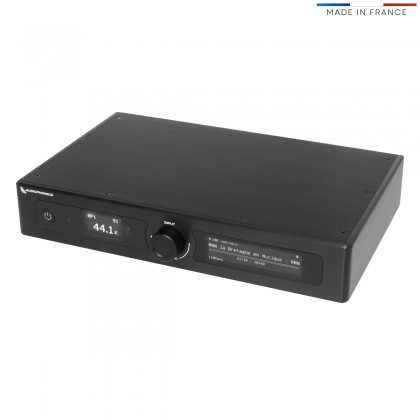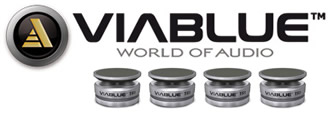New Customer?
Create your accountNo products
Prices are tax included
By buying this product you get 49 loyalty points
This EVO-SABRE DAC can operate in pure DAC mode immediately upon reception.
WARNING: In order to take advantage of the network drive function of this product, you will need to install an Audiophonics software image containing the screen and network scripts. These are available here: Images EVO-SABRE DAC
EVO-Sabre DAC
Full Balanced DAC 2x 9038Q2M 32bit 768kHz / Streamer Raspberry Pi 4
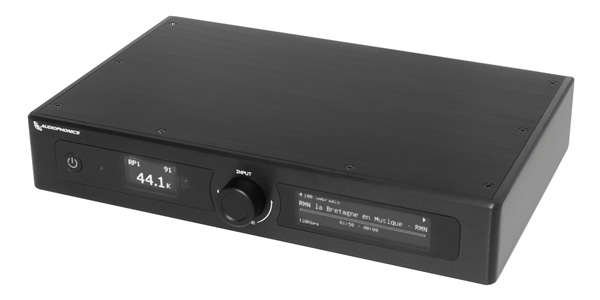
This is the mounted version of the Audiophonics Evo-Sabre DAC. A software solution of your choice remains to be installed in order to be able to use the device.
The Evo-Sabre DAC only works with Audiophonics software images containing the scripts for the display and the network.
The raspberry Pi4 is included in the package and already mounted in the device.
With its 100% aluminum casing, two screens, rotary switch on the front panel, remote control and extensive connectivity, the Audiophonics EVO-Sabre DAC presents itself as an excellent DAC combo and network player of very high quality.
Both DAC and a true dematerialized playback solution, capable of streaming your high-definition audio files from a multitude of different sources thanks to generous connectivity, both wired (coaxial S/PDIF, optical, USB audio, USB storage) and wireless (Wi-Fi, bluetooth 5.0 with all relevant audio protocols), the Evo-Sabre is particularly versatile and efficient.
Review by Audio Science Review
" I am happy to recommend the Audiophonics EVO Sabre given the unique functionality, form factor, and performance. "
The EVO Sabre DAC Audio Circuit
Dual ES9038 DAC integrated in balanced mode

The EVO is a high-precision DAC powered by two ES9038Q2M SABRE 32-bit chips integrated in Dual Mono mode: each of these chips dedicates 100% of its computing power to a single channel of the stereo signal for exceptionally clear playback with tightly controlled crosstalk.
This component is one of the flagship products of ESS and belongs to the best current hardware solutions for high-fidelity audio decoding, notably with the famous HYPERSTREAM 32 BIT 768KHZ architecture. These chips are also equipped with advanced reconstruction filters and have an excellent dithering finesse.
ESS technology is also very popular in that it provides extremely precise volume control that is respectful of the digital signal.
The card therefore works in balanced and unbalanced mode and offers both a balanced stereo output on a 3-pole XLR connector and an unbalanced stereo output on an RCA connector. The module can thus be ideally suited to most integration scenarios and will easily find its place in minimalist audio installations as well as in very complex high-fidelity chains.
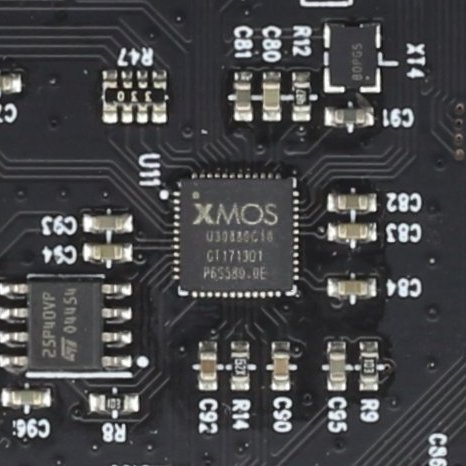
USB XMOS U208 Interface
The USB-B input (USB-2 standard) is operated via an XMOS U208 USB interface. It is a proven reference component in the world of high-fidelity music, supporting digital streams up to 32-bit 768kHz with DSD support.
Definitely high-resolution oriented, this asynchronous USB interface has a computing capacity of 1000 MIPS completely dedicated to the processing of your digital audio signals with minimal jitter and noise. When the EVO SABRE DAC is used in conjunction with a Raspberry Pi, this high-definition USB input allows immediate interfacing of digital audio streams to RPI I2S up to 384kHz / DOP 128.
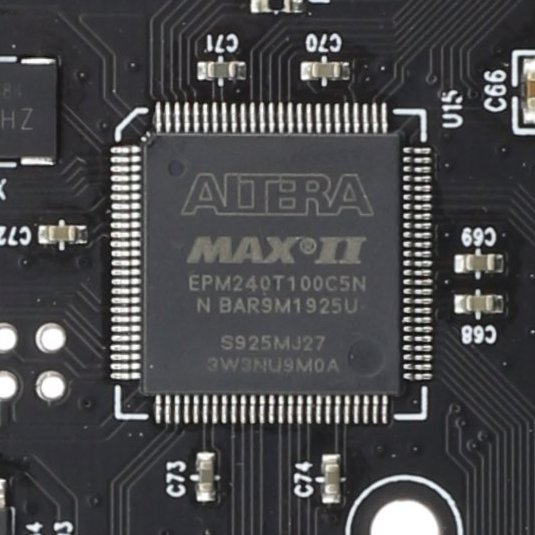
Altera Max FGPA
Unlike its predecessor, EVO-Sabre has several inputs managed by an independent interface. SPDIF signals are handled by an Altera Max FGPA that can cleanly process digital input streams. These streams are interfaced in I2S to each of the two DAC chips, which represents a significant performance gain over previous generations. The SPDIF inputs accept PCM signals up to 24/192 as well as DSD 128 DOP streams.
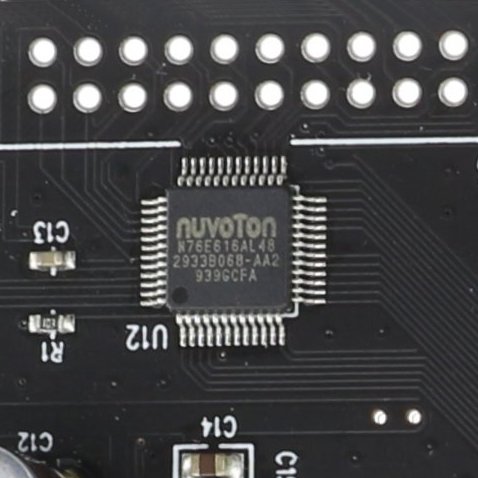
Autoconfiguration by microcontroller
Thanks to a built-in microprocessor, the Evo-Sabre is able to automatically detect the format and sampling rate of the source and automatically adapt to it in order to immediately offer the best listening performance without the need for user intervention.
This CPLD chip control maintains high stability while preventing decoding problems as well as the appearance of listening artifacts. In addition, it enables playback of playlists with heterogeneous file types in succession without having to worry about reconfiguring the DAC on a regular basis for optimal audio quality.
RaspDAC EVO Interface
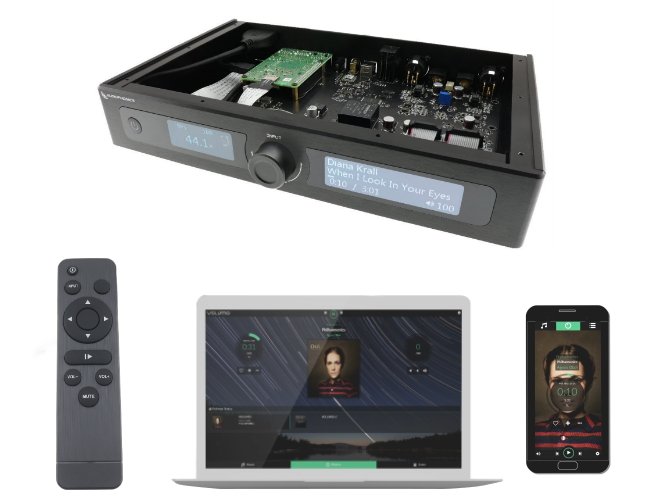
Dual screen
The Evo-Sabre DAC has two separate screens. The EVO Sabre audio circuit display (left) is a 1.3" 128X64 OLED screen. It simultaneously displays the active input, sample rate and volume as set by the ES9038Q2M DAC chip controller.
It allows you to check in real time that the processing of your files is proceeding as planned and in the best conditions.
A second 3.12" 256x64 OLED display is connected to the Raspberry Pi in SPI. This secondary display can thus retrieve in real time playback data at software level (Dietpi/LMS) in a similar way as our RaspDac Mini already do (this feature requires using one of our custom distributions or configuring a screen script yourself).
Front panel controls
A switch located on the front panel allows the system to be turned on / off cleanly while preserving the integrity of the storage media (OS on SD card in a Pi & hard drives). It is backlit when the module is off but powered to indicate that the circuit is ready for operation.
The rotary encoder in the center is directly connected to the volume control of the DAC chips. It allows easy and precise volume adjustment from the front of the device. It is also a very convenient push button for navigating through the various menus.
Infrared remote control
An infrared receiver communicates both with the microcontroller in charge of driving the DAC chips and with the Raspberry Pi if the EVO-Sabre is used in network drive mode with configured LIRC. The remote control (supplied) thus centralizes most of the reading functions for great ease of use.n.
Input selection, volume and standby functions, as well as filter settings are handled by the integrated microcontroller, while the play/pause, previous/next functions are transferred to the RPI (if it is running in an environment with LIRC).
Web App / LMS
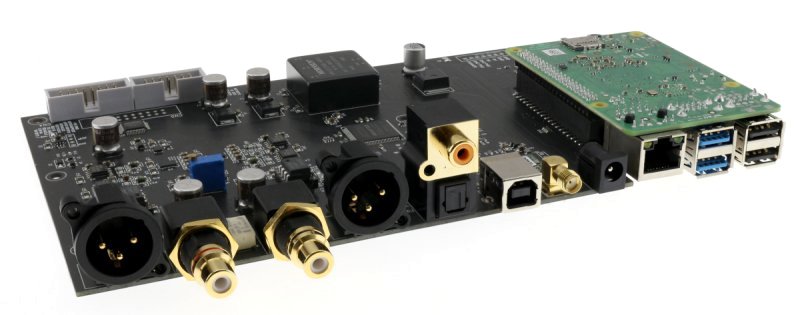
Used in conjunction with a Raspberry Pi 4, the EVO-SABRE ES9038Q2M becomes a complete cloud-based playback solution, capable of running the best network streamer / player solutions. This opens up a plethora of options for driving the device (playback, retrieving audio files from a NAS, online streaming service) via the network (simple web browser accessible from any connected object, dedicated applications, or your own scripts) to cover the full range of possibilities and realize the full potential of your audio installation.
The pinout is the most common, compatible with the RPI-DAC driver and present in all Raspberry distributions.
It is also possible to use the I-Sabre 9038 driver, integrated in the Raspberry PI kernel from version 4.19.34. This function allows access to the DAC chip parameters (volume, hyperstream parameters, filters) directly via the RPI and its access interfaces (in addition to access via remote control and controls on the front of the device).
RaspDAC EVO Case
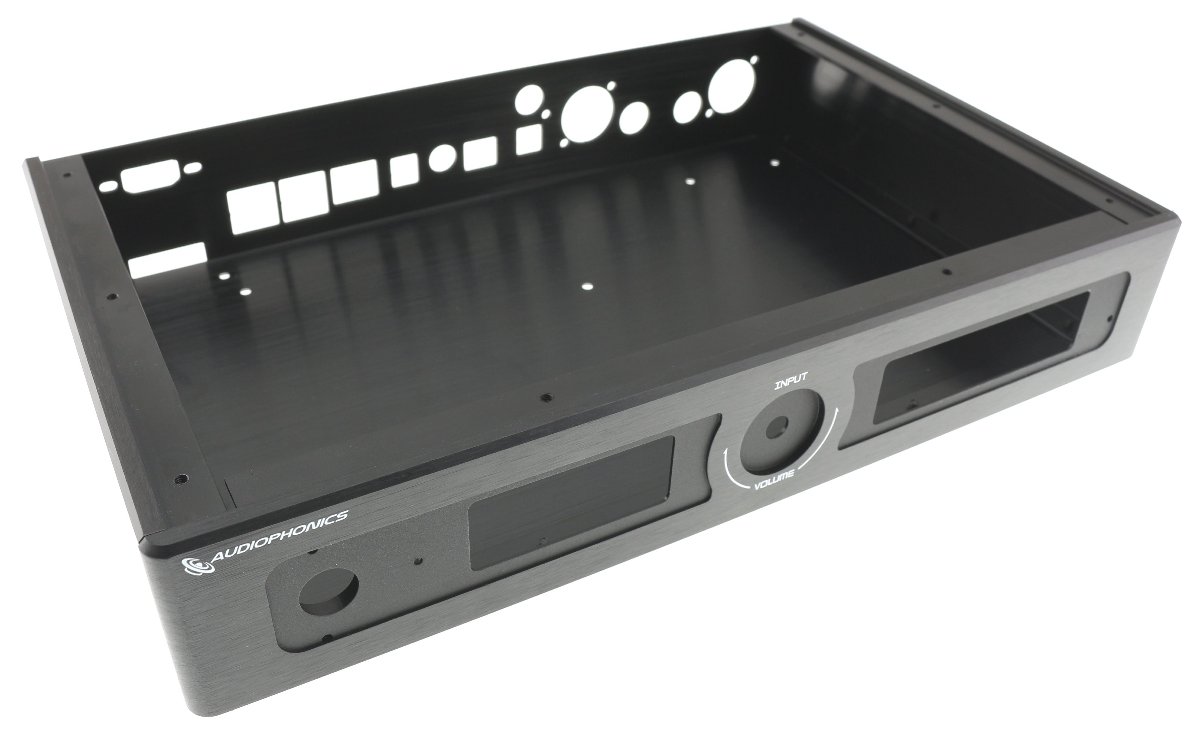
The Audiophonics Evo-Sabre is housed in a 100% machined aluminum case, a material that is light, robust and blocks interference that may affect the audio.
Rear panel

From left to right, the connector panel has a balanced XLR output and an unbalanced RCA output. Next are the digital inputs of the DAC with coaxial connector, optical connector, USB-B input and bluetooth antenna.
Finally, the connector panel is equipped with a DC jack input dedicated to the power supply and then RPI 4 connectors (RJ45, USB-3, USB-2, HDMI video output as well as an SD card connector dedicated to the operating system).
Both outputs (RCA & XLR) are active simultaneously. Also, the SD card is not included.
EVO Sabre DAC power stage
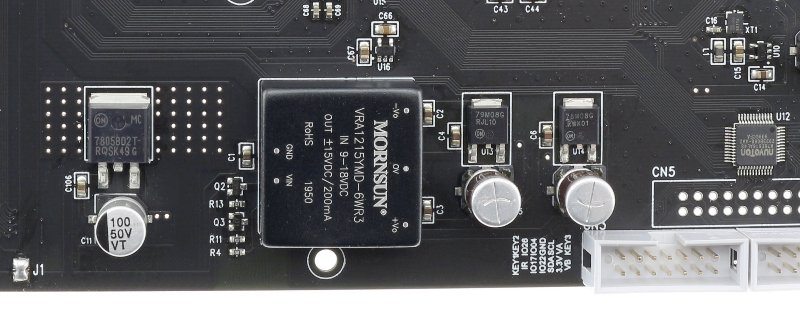
Powered via a 9V DC jack connector, the module operates from a robust and quiet power stage to ensure a stable signal while limiting residual noise. For this purpose, the PCB integrates a Mornsun DC/DC converter followed by two voltage regulators 79M08 / 78M08 dedicated to the analog part, supplied in +/-8V.
The card embeds a separate 5V power supply, dedicated to the Raspberry Pi. In this scenario, the RPI is powered directly via its GPIO port, thus avoiding multiple connections and cables. The whole system will thus remain simple and easy to use in all its configurations.
The board also has Ultra Low Noise Voltage Regulators dedicated to the conversion stage to isolate the DACs from the main power supply. The DVCC voltage is generated from an LP5907 (regulation <6.5µV), which allows to generate the Vref 1.2V of the DAC which is a critical voltage. The AVCC voltage is generated from a dedicated ADP150 regulator (regulation <9µV).
Technical characteristics
| Specifications | |
|---|---|
| Product type | DAC / Streamer |
| DAC Chip | 2x ESS ES9038Q2M |
| Architecture | Balanced |
| Audio inputs | S/PDIF Coaxial S/PDIF Optical Bluetooth HQ (Antenna available here) USB-B (XMOS) I2S GPIO (pinout RPI-DAC) |
| Audio outputs | Single-ended stereo RCA (2V RMS) Balanced stereo XLR (4V RMS) |
| Sampling rates | USB : 768kHz / DOP256 SPDIF : 192kHz / DOP64 |
| Supply voltage | 9VDC (2A minimum) on Jack DC connector (4A power supply included) |
| Standby consumption | 700ma |
| USB Interface | XMOS U208 |
| FPGA | Altera Max |
| Housing | 100% Aluminum |
| Dimensions | 185 x 300 x 55 mm |
| Weight | 1.3kg |
FFT measures
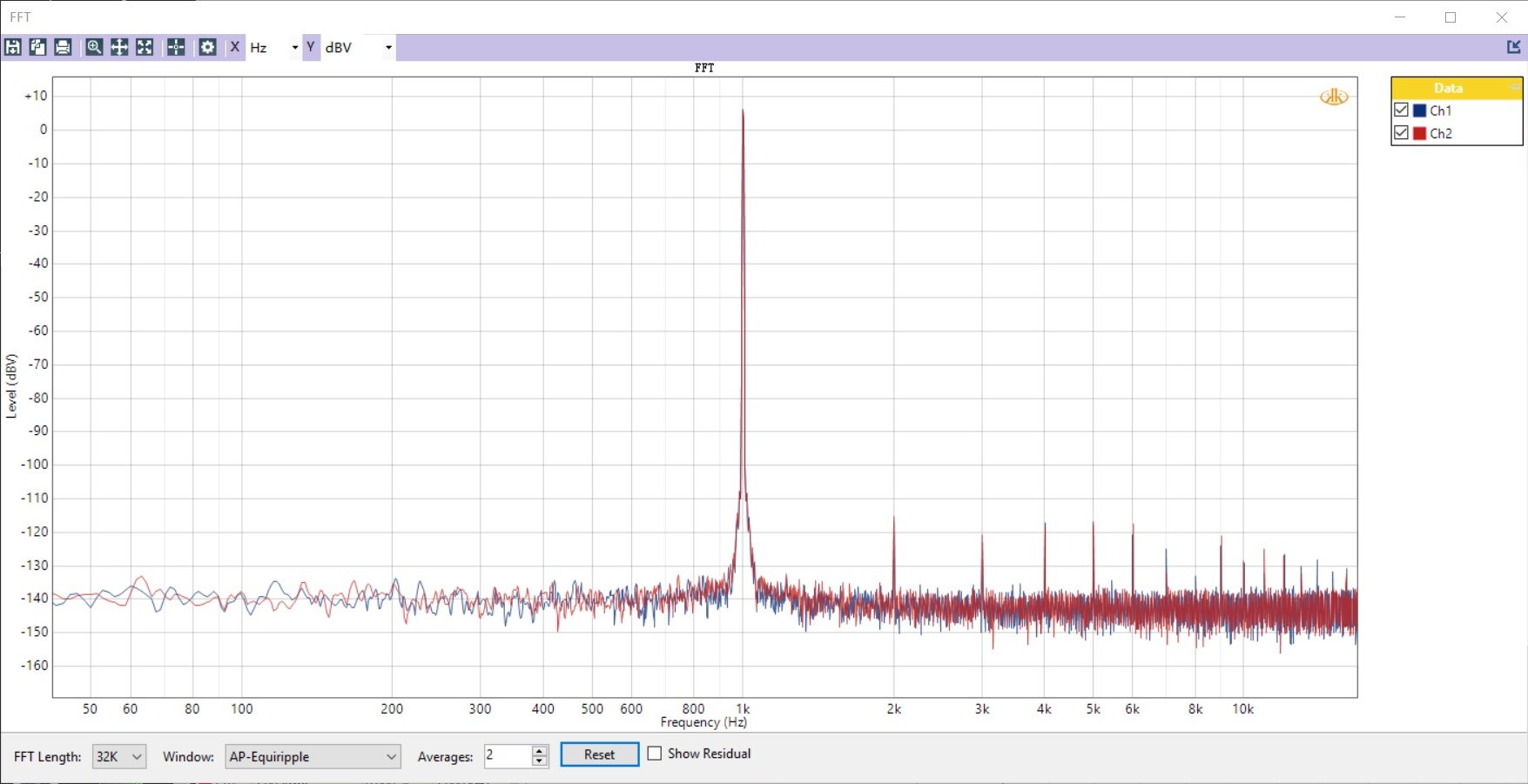
| Input | Bluetooth |
| Input | USB |
| Input | Optical |
| Input | GPIO |
| Input | SPDIF |
| Output | RCA |
| Output | XLR |
| DAC / ADC Chip | ES9028Q2M |
| Max sampling rate | 768kHz |
| Max sampling rate | 384kHz |
| Color | Black |
| Remote Control | Yes |
| Streaming services & Network protocols | Spotify |
| Streaming services & Network protocols | Qobuz |
| Streaming services & Network protocols | Web radios |
| Streaming services & Network protocols | Deezer |
| Streaming services & Network protocols | Tidal |
| Streaming services & Network protocols | DLNA |
No reviews at this time.


